- Home/
- Highlights: ‘Join The #Mere10Guz Initiative. Clean-up, Segregate And Compost,’ says Amitabh Bachchan At The Season 4 Launch Of Banega Swachh India Campaign
Highlights: ‘Join The #Mere10Guz Initiative. Clean-up, Segregate And Compost,’ says Amitabh Bachchan At The Season 4 Launch Of Banega Swachh India Campaign
In 2017, as the campaign enters its fourth season the aim is to encourage people to follow 3 steps as part of the #Mere10Guz initiative and through that set an example to inspire others to join the movement.
Mr Bachchan leaves you with this message, "Join the #Mere10Guz initiative."
To participate, adopt the 3 steps of #Mere10Guz - Clean-up. Segregate. Compost. Upload images/videos of your effort here and get featured on NDTV on Rashtriya Swachhta Diwas on October 2
To participate, adopt the 3 steps of #Mere10Guz - Clean-up. Segregate. Compost. Upload images/videos of your effort here and get featured on NDTV on Rashtriya Swachhta Diwas on October 2
Here's the impact of the waste segregation and composting efforts that Garden Estate, Gurugram has seen:
- 55% of Total Waste 225 kilos per day (Kitchen Waste) is composted
- Waste dispatched to landfill reduced by 82,125 kgs per annum
- 25% of the waste generated is being recycled as the segregation has improved
- Only 20% of the rejected waste is going to Landfill
- The housing complex also has a sewage treatment plant of 75,000 litres, so freshwater consumption for gardening cut by that much amount.

- 55% of Total Waste 225 kilos per day (Kitchen Waste) is composted
- Waste dispatched to landfill reduced by 82,125 kgs per annum
- 25% of the waste generated is being recycled as the segregation has improved
- Only 20% of the rejected waste is going to Landfill
- The housing complex also has a sewage treatment plant of 75,000 litres, so freshwater consumption for gardening cut by that much amount.

This is what it took Garden Estate to put waste segregation and composting unit in place:
- Cost Of Composting unit : Rs 50,000
- Cost of Bins/bags supplied to residents: Rs 80,000
- Cost of Composting shed: Rs 1,35,000
- Labour and consumables: Rs 7,000 per month
- First compost of 600 kgs was ready by end of April 2016.
- Compost produced and utilised till December 2016 - 7000 kgs

- Cost Of Composting unit : Rs 50,000
- Cost of Bins/bags supplied to residents: Rs 80,000
- Cost of Composting shed: Rs 1,35,000
- Labour and consumables: Rs 7,000 per month
- First compost of 600 kgs was ready by end of April 2016.
- Compost produced and utilised till December 2016 - 7000 kgs

Garden Estate, a residential complex in Gurugram comprising of 373 flats and houses built on 22 acres took up waste segregation and composting since February, 2016. For segregation, they adopted the 2 bin - 1 bag method which now also mandated by Ministry of Environment, Forest and Climate Change. For composting, their system is completely natural but requires some space and lots of dry Leaves. It is very cost effective. Since no big electric machines used hence low Carbon footprint.


Let's make segregation and waste management like brushing our teeth. You have to do it yourself.
The more you segregate the more value you make it out of it: Swati Sambyal, Programme Manager, Environmental Governance (Municipal Solid Waste), Centre for Science and Environment

The more you segregate the more value you make it out of it: Swati Sambyal, Programme Manager, Environmental Governance (Municipal Solid Waste), Centre for Science and Environment

Learnings from Sri Sri School, Kolkata:
- Children are aware of the importance of segregating waste-food waste, dry waste as paper, plastic, glass, foils and e-waste.
- All paper waste, however small, gets recycled and fruit and vegetable peel waste goes into the compost pit in the school ground.
- Plastic bottles and cardboard boxes are often used in the Art & Craft classes and turned into beautiful objects.
- Waste water from Air conditioners are collected and used for cleaning purposes. Each year we plant many trees around the school.

- Children are aware of the importance of segregating waste-food waste, dry waste as paper, plastic, glass, foils and e-waste.
- All paper waste, however small, gets recycled and fruit and vegetable peel waste goes into the compost pit in the school ground.
- Plastic bottles and cardboard boxes are often used in the Art & Craft classes and turned into beautiful objects.
- Waste water from Air conditioners are collected and used for cleaning purposes. Each year we plant many trees around the school.

Things to learn from Kendriya Vidyalaya's initiative:
- Practices waste segregation at source - 19 points with 2 bins
- 87 % of the paper and plastic waste is recycled and reused
- Compost generated used for school garden
- Each class room as well as all areas (Office, staff rooms, laboratories, libraries etc.) have two dustbins - One wet and one for dry waste.
- One empty paper cartoon is provided to each class for collection of paper waste which in turn is collected at the end of the day in an identified area in the staff room. These papers are collected by the authorized dealer for recycling and reuse.
- Areas in the campus are identified for students to sit and eat their lunch during breaks so that waste is kept in one place.
- E-waste is auctioned and also sent to authorized dealers for recycling.
- Newspapers and examination waste are also sent to the authorized dealer for further recycling.
- Compost pits are available in the vidyalaya campus for biodegradable and horticulture waste which are later used as manure for the vidyalaya garden.
- Napkin Incinerator and Napkin Winning machine are installed in the vidyalaya for decomposing sanitary waste.
- Rainwater harvesting is also done in the vidyalaya and the water is further used in the garden.

- Practices waste segregation at source - 19 points with 2 bins
- 87 % of the paper and plastic waste is recycled and reused
- Compost generated used for school garden
- Each class room as well as all areas (Office, staff rooms, laboratories, libraries etc.) have two dustbins - One wet and one for dry waste.
- One empty paper cartoon is provided to each class for collection of paper waste which in turn is collected at the end of the day in an identified area in the staff room. These papers are collected by the authorized dealer for recycling and reuse.
- Areas in the campus are identified for students to sit and eat their lunch during breaks so that waste is kept in one place.
- E-waste is auctioned and also sent to authorized dealers for recycling.
- Newspapers and examination waste are also sent to the authorized dealer for further recycling.
- Compost pits are available in the vidyalaya campus for biodegradable and horticulture waste which are later used as manure for the vidyalaya garden.
- Napkin Incinerator and Napkin Winning machine are installed in the vidyalaya for decomposing sanitary waste.
- Rainwater harvesting is also done in the vidyalaya and the water is further used in the garden.

What we can learn from the Shri Ram School's example:
- The school is a no-plastic zone, discourages the use of any plastics and promotes recycling and reusing paper.
- Last year, the students constructed a bench solely out of waste plastic bottles filled with sand and joined together by cement. This was an undertaking to promote reuse and recycle of plastic bottles and to reiterate the gravity of the 'No-Plastic Zone.

- The school is a no-plastic zone, discourages the use of any plastics and promotes recycling and reusing paper.
- Last year, the students constructed a bench solely out of waste plastic bottles filled with sand and joined together by cement. This was an undertaking to promote reuse and recycle of plastic bottles and to reiterate the gravity of the 'No-Plastic Zone.

Students of the Shri Ram School set an example for others to follow:
- Posters line the bathrooms to encourage students to reduce water wastage and usage. This dirty water from bathrooms leaves the main building and goes to the Sewage Treatment Plant where it gets sanitised, disinfected and is used for watering the field and plants.
- The school has a gargantuan underwater Rain Water Harvesting System with 8 percolation pits in different areas. This water is again used for watering and cleaning purposes.
- The chemicals that are drained from the chemistry labs undergo an elaborate titration system where the residual mixture is treated with Sodium Hydroxide solution and diluted Hydrochloric Acid. This ensures that the chemical waste water that reaches the Sewage Treatment Plant is of a neutral pH.

- Posters line the bathrooms to encourage students to reduce water wastage and usage. This dirty water from bathrooms leaves the main building and goes to the Sewage Treatment Plant where it gets sanitised, disinfected and is used for watering the field and plants.
- The school has a gargantuan underwater Rain Water Harvesting System with 8 percolation pits in different areas. This water is again used for watering and cleaning purposes.
- The chemicals that are drained from the chemistry labs undergo an elaborate titration system where the residual mixture is treated with Sodium Hydroxide solution and diluted Hydrochloric Acid. This ensures that the chemical waste water that reaches the Sewage Treatment Plant is of a neutral pH.

The Shri Ram School's Swachh Agenda:
· To make things more interesting and to provide an incentive to students so as to ensure that they segregate the waste properly, the students of the Environment Society made the dry waste bins into basketball baskets.
· The waste paper collected in the entire school goes for recycling
· The school also has something called the Tetra Pack Bin where students throw their used and washed tetra packs. Aluminium within these tetra packs is taken and recycled by the companies which periodically collect these packs.

· To make things more interesting and to provide an incentive to students so as to ensure that they segregate the waste properly, the students of the Environment Society made the dry waste bins into basketball baskets.
· The waste paper collected in the entire school goes for recycling
· The school also has something called the Tetra Pack Bin where students throw their used and washed tetra packs. Aluminium within these tetra packs is taken and recycled by the companies which periodically collect these packs.

Some of the things that The Shri Ram School, Gurugram is doing right:
- Sewage treatment plant and manure pits
- The food scraps that are thrown, along with the preparatory food waste, go to the manure pits where they get decomposed to form manure. This manure is utilised by the school itself to sustain the myriad plants and pots on campus.
- The entire campus has coloured dustbins to allow students to dispose of trash quickly. Classrooms have two dustbins: one for wet waste (blue) and the other for dry waste (green).
- The contents of the wet waste dustbin go to the manure plant to decompose and form 'khaad'. An approximate 60 kg of manure is produced each month.

- Sewage treatment plant and manure pits
- The food scraps that are thrown, along with the preparatory food waste, go to the manure pits where they get decomposed to form manure. This manure is utilised by the school itself to sustain the myriad plants and pots on campus.
- The entire campus has coloured dustbins to allow students to dispose of trash quickly. Classrooms have two dustbins: one for wet waste (blue) and the other for dry waste (green).
- The contents of the wet waste dustbin go to the manure plant to decompose and form 'khaad'. An approximate 60 kg of manure is produced each month.

Momentum has picked up but there is a long way to go. We all need to join hands. The entire issue with waste management is that we forget that our backyard is someone's front yard. We all don't want waste around us but don't care about the rest of it: Swati Sambyal, Programme Manager, Environmental Governance (Municipal Solid Waste), Centre for Science and Environment


Things that Vijaynagar Housing Society Residents are doing right:
- The Garbage is segregated at the source: Residents give dry waste, wet waste and other bio-waste like used diapers and sanitary napkins.
- The dry waste is given for recycling and wet waste is given to 'Parisar Bhaginis' for composting.
- Each family spends Rs. 70 for this Zero Garbage Project monthly
-The other type of Garbage is given to Brihanmumbai Municipal Corporation (BMC) vehicle.

- The Garbage is segregated at the source: Residents give dry waste, wet waste and other bio-waste like used diapers and sanitary napkins.
- The dry waste is given for recycling and wet waste is given to 'Parisar Bhaginis' for composting.
- Each family spends Rs. 70 for this Zero Garbage Project monthly
-The other type of Garbage is given to Brihanmumbai Municipal Corporation (BMC) vehicle.

Very happy that Swachh Bharat has taken off and done so well but we now need to take the next step. We need to collect, segregate and compost this waste. Compost is a very healthy ingredient. It can be used as fertilizer: Amitabh Bachchan during the launch of Season 4 of NDTV-Dettol Banega Swachh India


Our purpose here is linked to cleanliness.We need to sort our waste. If we sort the waste where it is generated it will be easy to recycle this. We can reduce the burden of garbage on our country in this way: Amitabh Bachchan, Campaign Ambassador, NDTV-Dettol Banega Swachh India


Campaign Ambassador, Amitabh Bachchan gears up for the Season 4 launch.
T 2499 - Watch 8am NDTV .. I shall be there for the Swachh India programme !! pic.twitter.com/mmRX0o9y2j
- Amitabh Bachchan (@SrBachchan) April 19, 2017
Another aspect of Season 4 of the campaign is the launch of the Hygiene Index to measure performance of cities based on certain #Swachh parameters. The first leg of this study covered 10 cities. Know more about the hygiene index.


The grim numbers make segregating waste at source and composting very critical. If you have undertaken such an initiative then do share your story here.
The focus this year is on solid waste management, as Urban India is the world's 3rd largest garbage generator according to International Solid Waste Association (ISWA) and according to the Central Pollution Control Board (CPCB), 70% of the total solid waste in the country is collected and only 12% is treated.


Load More
Reckitt’s Commitment To A Better Future


Dettol Banega Swasth India Maternal And Child Health Tech Accelerator: Top 3 Winners Driving Change
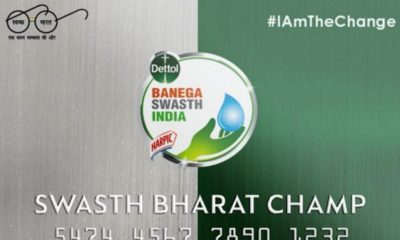

Swasth Bharat Champ Loyalty Card Program: Turning Hygiene Fun, Rewarding, And Digital
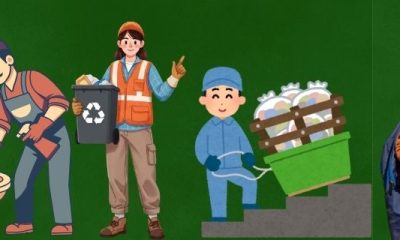

Harpic Safe Sanitation Programme: Transforming School Hygiene Across India
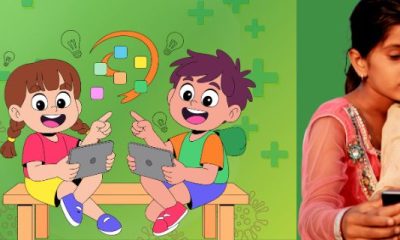

Dettol Banega Swasth India Hygieia AI Chatbot: A Milestone In India’s Digital Hygiene Efforts
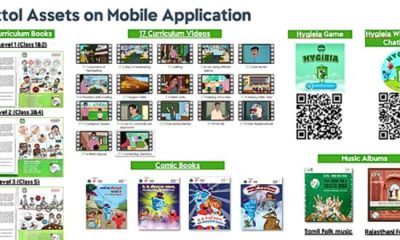

No Child Left Behind: Dettol Accessible Digital Curriculum App Is Making Hygiene Education Accessible For All
More Reckitt’s Commitment To A Better Future
Latest News
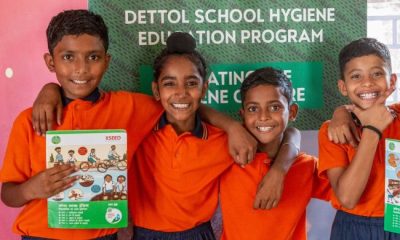

News4 months ago
One Of India’s Longest-Running Public Health Campaigns, Dettol Banega Swasth India, Reaches 26 Million Children
Reckitt’s Dettol Banega Swasth India campaign has reached out to over 26 million children, promoting lifelong hygiene habits and global...
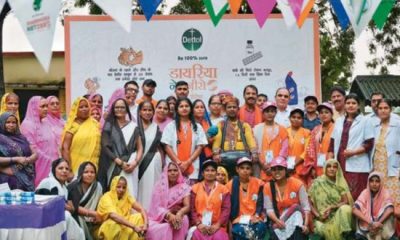

News5 months ago
Reckitt’s Diarrhoea Net Zero Future: Reaching 1.4 Million Rural Households In Fight Against The Disease
Reckitt is driving grassroots health transformation in India through large-scale hygiene, sanitation and child health initiatives aligned with the Viksit...


News8 months ago
Reckitt Unveils First-of-its-Kind Art Installation In Bhavnagar To Raise Awareness On Vector-Borne Diseases
A first-of-its-kind public installation is a reminder to invest in prevention of malaria, dengue and other vector borne diseases

















R.C.Goyal
April 20, 2017 at 11:18 am
In our area in Delhi lots of wet waste are generated by fruit & vegetables sellers and small changes. In the absence of any seperate arrangements to collect this wet waste by MCD in Delhi, this got mixed ups with other items and end up at landfil.
G
August 14, 2017 at 3:34 am
Do something about the stray dogs in India. It’s shameful for the country.